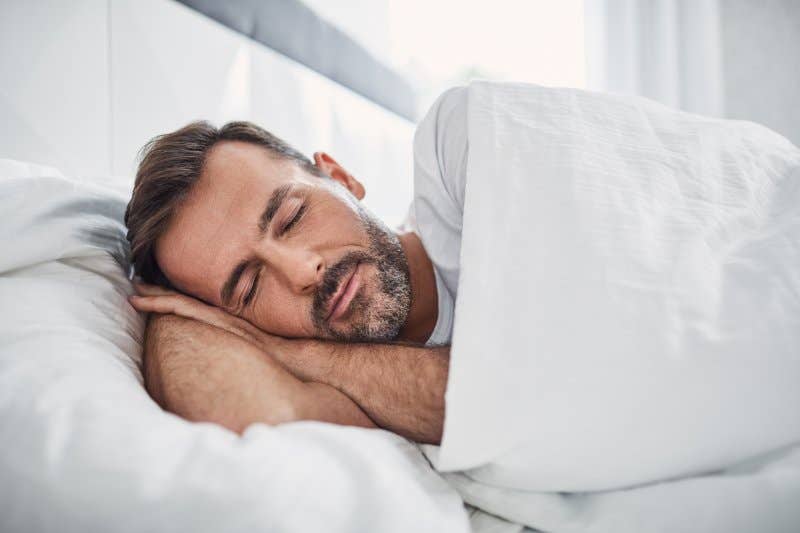Researchers reveal the ideal temperature to sleep longer and reduce stroke risk
According to the CDC, an estimated 35% of US adults regularly fall short of the recommended amount of sleep.

In a world where the boundaries between work and rest blur, one question resonates deeply with many: "How did you sleep last night?" For a startlingly large portion of the American population, the answer is far from satisfactory.
According to the Centers for Disease Control and Prevention (CDC), an estimated 35% of US adults regularly fall short of the recommended amount of sleep. This is not merely a minor inconvenience; consistently sleeping less than seven hours is associated with an increased risk of numerous health problems, including obesity, diabetes, high blood pressure, heart disease, stroke, and frequent mental distress.
The problem of insufficient sleep is particularly pronounced among the elderly. Despite the fact that they, too, require the same 7 to 9 hours of sleep recommended for all adults, older individuals frequently grapple with disrupted sleep patterns.
The National Institute on Aging acknowledges that as people age, they tend to retire to bed earlier and rise earlier than they did in their youth. Furthermore, external factors such as arthritis pain, certain illnesses, or medications can worsen sleep quality in seniors.
Related Stories
While much research has delved into the physical and behavioral causes of sleep disturbances, the impact of the sleep environment has often been overlooked. Dr. Amir Baniassadi of the Hinda and Arthur Marcus Institute for Aging Research emphasized, "Most research into sleep problems has focused on physical and behavioral factors, even though the sleep environment is just as influential."
In a groundbreaking study, Dr. Baniassadi, in collaboration with colleagues from Hebrew SeniorLife (an affiliate of Harvard Medical School), embarked on an extensive research project. Their mission was to shed light on the often-neglected relationship between the sleep environment and the quality of sleep experienced by older adults.
The research team collected data from nearly 11,000 nights of sleep and environmental conditions, all gathered from a sample of 50 older adults. Using wearable sleep monitors and environmental sensors, they meticulously tracked sleep patterns and environmental factors within the participants' homes over an extended period.
The results of this study, which have been published in the esteemed Science of the Total Environment journal, have unveiled some intriguing findings. It turns out that the ideal bedroom temperature for restful sleep in older adults falls between 68 to 77 degrees Fahrenheit. When the temperature veers outside of this range, particularly as it climbs from 77°F to 86°F, sleep efficiency can decrease by as much as 5 to 10%.
Dr. Baniassadi highlighted the significance of these discoveries, stating, "These results underscore the potential to improve sleep quality in older adults by optimizing their home's thermal environment. It emphasizes the importance of tailoring temperature adjustments to individual needs and circumstances."
This research also illuminated the fact that optimal bedroom temperatures can vary significantly from one person to another, emphasizing that comfort is a subjective matter. While some individuals thrived in warmer rooms, others needed a cooler environment to achieve sound sleep.
This individual variation in sleep preferences dovetails with a growing phenomenon known as the "sleep divorce." Dr. Erin Flynn-Evans, a consultant to the American Academy of Sleep Medicine, explained, "There are benefits for some partners to sleep separately. Studies demonstrate that when one bed partner has a sleep disorder, it can negatively affect the other sleeper." This has led many couples to revisit the concept of separate beds or even separate bedrooms, harkening back to the days of sitcom couples in the 1960s.
To accommodate these varying sleep patterns, a recent survey conducted by the American Academy of Sleep Medicine found that couples are resorting to various strategies such as earplugs, eye masks, silent alarms, and even adjusting their bedtime schedules. However, more than a third of those surveyed discovered that the simplest and most effective solution was to separate from the primary source of their sleep disturbances: their partner.
In addition to adjusting room temperature and, if necessary, sleeping arrangements, there are other well-established tips for achieving a peaceful night's sleep. These include avoiding late-night meals and drinks, refraining from alcohol consumption, and limiting caffeine intake as the day progresses.
Dr. Baniassadi and his team are already planning their next steps, aiming to investigate the implications of a warmer climate on sleep, particularly for low-income older adults. Their ultimate goal? Developing tailored interventions to enhance the sleep environment and ensure that everyone can find respite in the arms of Morpheus.
In the end, understanding and acting upon the intricate interplay between personal preferences, environmental conditions, and sleep can play a pivotal role in enhancing our overall well-being. The key lies in paying attention, making necessary adjustments, and never underestimating the power of a good night's sleep. The pursuit of quality rest, it seems, is an endeavor well worth the effort in our quest for a healthier and happier life.
Note: Materials provided above by The Brighter Side of News. Content may be edited for style and length.
Like these kind of feel good stories? Get the Brighter Side of News' newsletter.
Joseph Shavit
Head Science News Writer | Communicating Innovation & Discovery
Based in Los Angeles, Joseph Shavit is an accomplished science journalist, head science news writer and co-founder at The Brighter Side of News, where he translates cutting-edge discoveries into compelling stories for a broad audience. With a strong background spanning science, business, product management, media leadership, and entrepreneurship, Joseph brings a unique perspective to science communication. His expertise allows him to uncover the intersection of technological advancements and market potential, shedding light on how groundbreaking research evolves into transformative products and industries.



